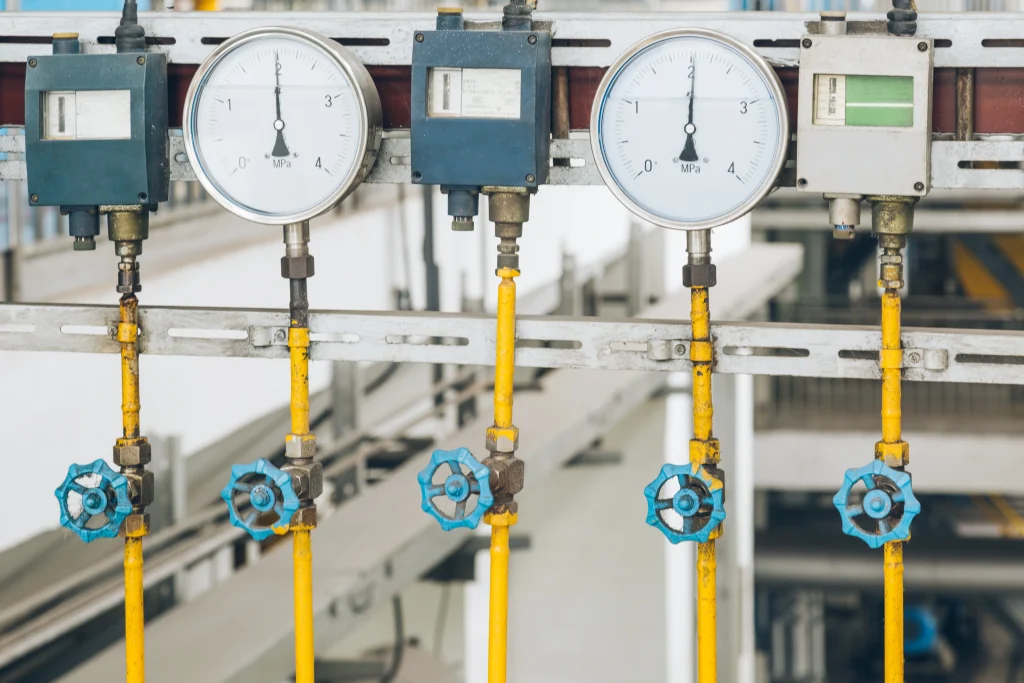
What Is ASME Pressure Vessel Code? Key Insights for You
What is ASME pressure vessel code
You’ve probably seen or heard about safe, heavy-duty containers that hold gases or liquids under pressure. If you’ve ever wondered how these containers are designed to avoid catastrophic accidents, what is ASME pressure vessel code is a key question—because this standard is a major reason why. In fact, over 100 countries rely on the ASME Boiler & Pressure Vessel Code (BPVC) for safety standards, and more than 11,500 certifications exist worldwide. Good news—once you grasp the basics, you’ll see how these guidelines help protect your teams and your operations.
If you’re new to pressure vessels, you can explore what is a pressure vessel for an overview. But if you’ve been researching pressure vessel manufacturers in the USA, you’ll quickly notice references to “ASME Code.” Below, we’ll walk through what the code covers, how it’s organized, and why it matters for you.
Why this code matters
By design, pressure vessels hold internal pressures that exceed normal atmospheric conditions. Even small flaws in materials, welds, or construction can lead to leaks or, in the worst cases, explosions. The ASME code originated in the early 1900s after several tragic boiler explosions in Massachusetts. Public outcry led to the first legal standards for boiler and pressure vessel construction. Today, the ASME code is recognized almost universally to ensure:
- Consistent standards of safety: It sets stringent guidelines for materials, design, and testing.
- Trust in manufactured products: Buyers know that ASME-certified vessels meet proven reliability benchmarks.
- Reduced risk of accidents: Well-defined inspection procedures catch weaknesses early.
- Uniform global application: You can partner with manufacturers worldwide and expect a baseline level of quality.
For you, this means less worry about compliance headaches. When you order an ASME-stamped vessel, you know it’s passed specific checks, from proper metals to thorough inspections. This helps lower risks for everyone on-site. And because regulators often refer to the ASME code, you’ll also reduce the chance of running into legal roadblocks if you install or operate these vessels in different states or countries.
Many companies ask, “Do all pressure vessels need to follow ASME guidelines?” While certain small or low-pressure designs may be exempt, the majority of industrial vessels must comply if they operate above 15 psi. If you look at pressure vessel codes in general, you’ll see that ASME is the primary reference in North America.
Key sections you should know
The ASME code is a multi-section standard for designing, testing, and maintaining pressure vessels. Section I covers boilers; Section II outlines material specs; Section III applies to nuclear components; Section VIII handles pressure vessels by pressure range; Section IX covers welding qualifications; and Section XII addresses transport tanks for hazardous materials. When choosing a U.S. manufacturer, ensure they follow the relevant sections—high-pressure applications may require Section VIII Division 3, and industries like nuclear or chemical processing often need additional certifications.
Section VIII: A closer look
Because most industrial vessels exceed 15 psi, Section VIII is central for many manufacturers. It teaches mandatory requirements on fabrication, inspection, testing, and certification of pressure vessels. The code breaks it down as:
- Division 1: For vessels above 15 psi.
- Division 2: Addresses designs above 3000 psi but below 10,000 psi, often used for certain industrial applications.
- Division 3: Targets ultra-high pressure designs above 10,000 psi.
Following these rules ensures your vessel won’t buckle or rupture under normal or slightly off-normal operating conditions. It also prescribes detailed inspections, from radiography of welded joints to ultrasonic testing of vessel thickness.
Section II: Materials matter
Your vessel’s reliability starts with the right steel, alloy, or composite. Section II lays out mechanical specs and testing methods to avoid hidden flaws. If you want more information about materials, check out what are the different types of pressure vessel codes or pressure vessel materials for a closer look at which alloys might suit your needs. Choosing the wrong material can lead to cracks if it’s too brittle or warping if it’s too ductile under high temperature.
Recent and upcoming 2025 updates
Every two years, the BPVC is updated to reflect new technologies and lessons learned. The 2025 edition aims to simplify layout, clarify vessel-specific requirements, and emphasize performance-based expectations. If you’re involved in ordering or fabricating large vessels, you should know a few key points:
- Clearer vessel-specific requirements: With the new edition, you’ll see more explicit guidelines for in-service examinations versus construction-phase inspections. That means fewer ambiguities about when (and how) you need to inspect.
- Streamlined certification for design professionals: ASME is refining its approach to design-by-analysis, so engineers can follow a more logical path to prove a vessel’s viability.
- Materials under stress: Nuclear applications get an extra spotlight, especially for fatigue analysis. If you’re in the nuclear sector, you’ll want to pay close attention to new stress and fatigue rules.
- Improved readability: Past revisions sometimes reorganized chapters in confusing ways, leaving manufacturers scrambling to interpret them. The 2025 update focuses on a layout that’s more logical and less repetitive.
To prepare effectively, consider reviewing preview materials from ASME or attending code update briefings. Manufacturers often mobilize cross-functional teams—engineering, quality assurance, and compliance—to stay ahead of these revisions. You can also watch for specialized webinars hosted by organizations like AccurisTech, where ASME subject matter experts explain the key changes in a live Q&A format.
Practical steps to ensure compliance
If you have an operational role in a facility that uses pressure vessels, or you’re tasked with sourcing new ones, you might wonder how best to comply with the ASME code. Here are a few strategies:
Engage certified manufacturers
Before you order, check the manufacturer’s ASME credentials. Many companies display an “R,” “U,” or “S” stamp. Ask if they’ve worked on your vessel’s specific pressure range and design.
Request design reviews
Make sure your engineering team consults relevant code sections early. This helps avoid costly redesigns.
Schedule regular inspections
Even a well-built vessel needs periodic checks. Non-destructive examination (NDE), like ultrasonic testing, identifies early signs of corrosion or thinning. For more on effective upkeep, see pressure vessel maintenance.
Keep documentation organized
The ASME code requires thorough record-keeping: material certifications, weld procedures, inspection reports, etc. Having documents in order speeds up future recertifications and expansions.
Stay informed about changes
Every new edition can shift notation, add clarifications, or rearrange chapters. Keep an eye out for official announcements. If you’re worried about code complexity, remember you can request training from ASME or other professional groups.
Good news—staying compliant isn’t as daunting if you partner with trusted experts. Many shops have decades of experience and can guide you through each step, from design to final sign-off.
What is ASME pressure vessel code
So, what is ASME pressure vessel code in practical terms? It’s a recognized framework that sets clear guidelines for designing, fabricating, and inspecting vessels under pressure. By adopting these standards, manufacturers reduce the chance of accidents and improve the reliability of systems critical to industries like energy, chemicals, and more. For you, it removes much of the guesswork. You can focus on your core business rather than worrying about unexpected shutdowns or safety citations.
Need a reliable partner?
Red River specializes in the design and manufacturing of pressure vessels. We also fabricate related items such as prefabricated spools and skid packages.
Reach out to us today and experience the Red River difference. Where American-made products and American Values come together, we care more.
Frequently Asked Questions
1. What are pressure vessel codes?
Pressure vessel codes are official safety standards that govern the design, construction, inspection, and maintenance of pressure vessels—containers that hold gases or liquids under pressure. These codes ensure that vessels can safely handle high-pressure environments without risk of rupture, leaks, or explosions.
2. What is the ASME pressure vessel code?
The ASME pressure vessel code refers to ASME Boiler and Pressure Vessel Code (BPVC) Section VIII, developed by the American Society of Mechanical Engineers. It’s the most widely used standard globally for building pressure vessels. It outlines rules for design, materials, fabrication, testing, and certification, ensuring that vessels meet strict safety and reliability requirements.
3. What are the different types of pressure vessel codes?
Several organizations issue pressure vessel codes, each tailored to specific industries or regions. Common types include:
- ASME BPVC (USA & international) – Covers most industrial applications.
- PED (Pressure Equipment Directive, EU) – Required for vessels used in the European Union.
- CSA B51 (Canada) – Canadian code governing pressure equipment.
- AD 2000 (Germany) – German-based safety code for pressure vessels.
- ISO 11120 – For gas cylinders and transportable pressure vessels globally.
Each code has unique requirements, but all share one goal: prevent pressure-related failures through strict design and testing standards.
4. Why is material selection so important?
Poor material choice can lead to cracks, deformations, or corrosion under high temperature and pressure. Section II of the ASME code provides detailed guidance on approved materials and their required tests to ensure reliability.
5. How can I prepare for the 2025 ASME code changes?
You can preview ASME materials, attend code update webinars, and coordinate internal training. Reviewing potential design or inspection adjustments early will help you avoid last-minute surprises once the new edition takes effect.
Key takeaway
- Verify that any pressure vessel you purchase meets relevant ASME section requirements.
- Proper material selection, guided by ASME Section II, prevents failures.
- Regular inspections and thorough documentation are central to compliance.
- The 2025 BPVC edition will bring layout improvements and renewed focus on performance-based rules.
